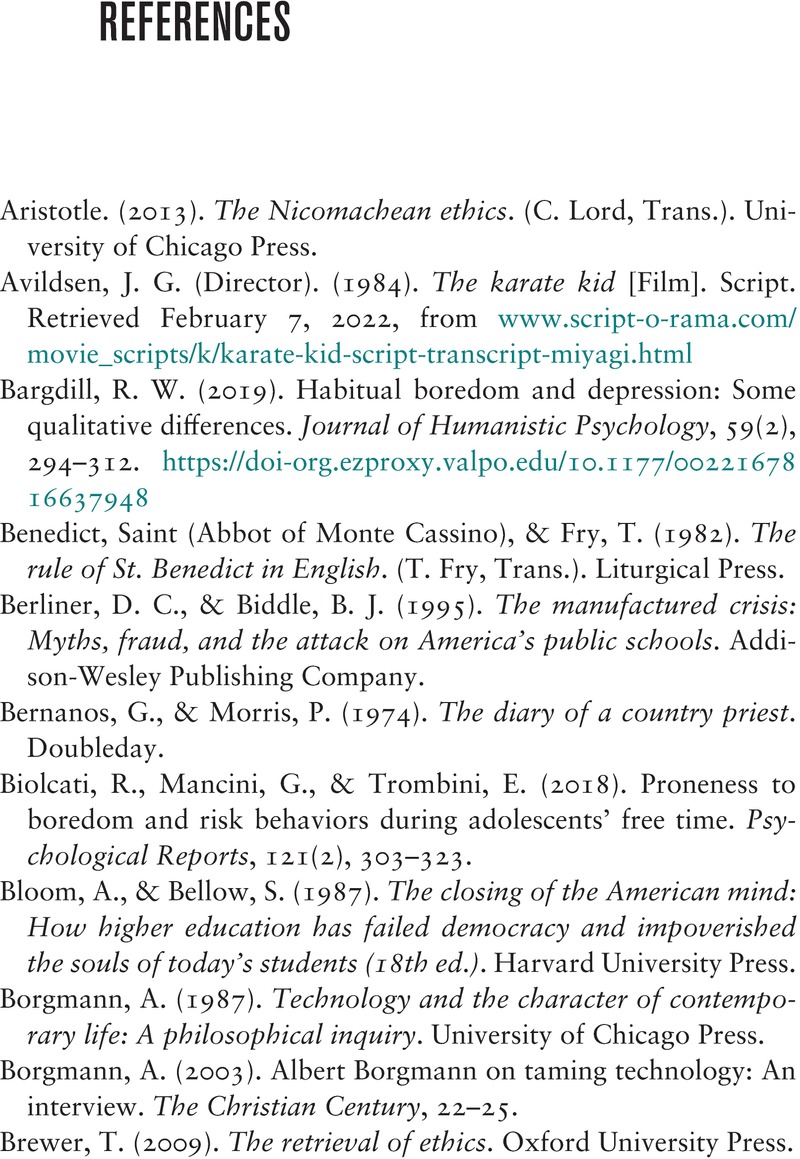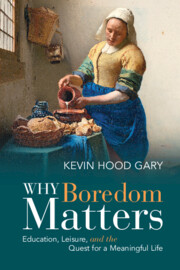References
Published online by Cambridge University Press: 21 July 2022
Summary

- Type
- Chapter
- Information
- Why Boredom MattersEducation, Leisure, and the Quest for a Meaningful Life, pp. 135 - 143Publisher: Cambridge University PressPrint publication year: 2022

